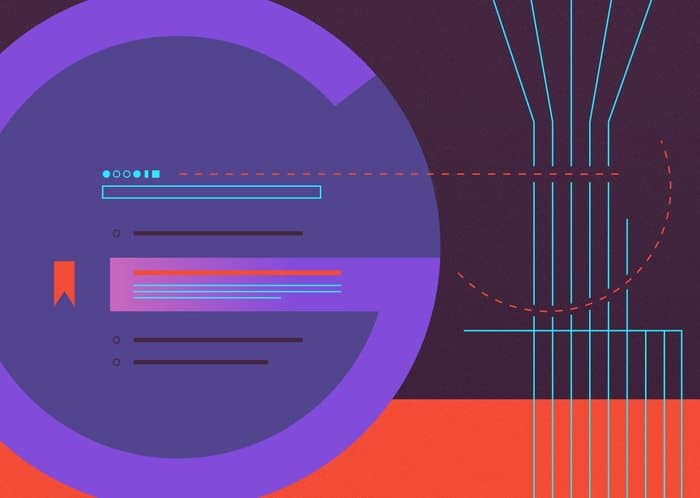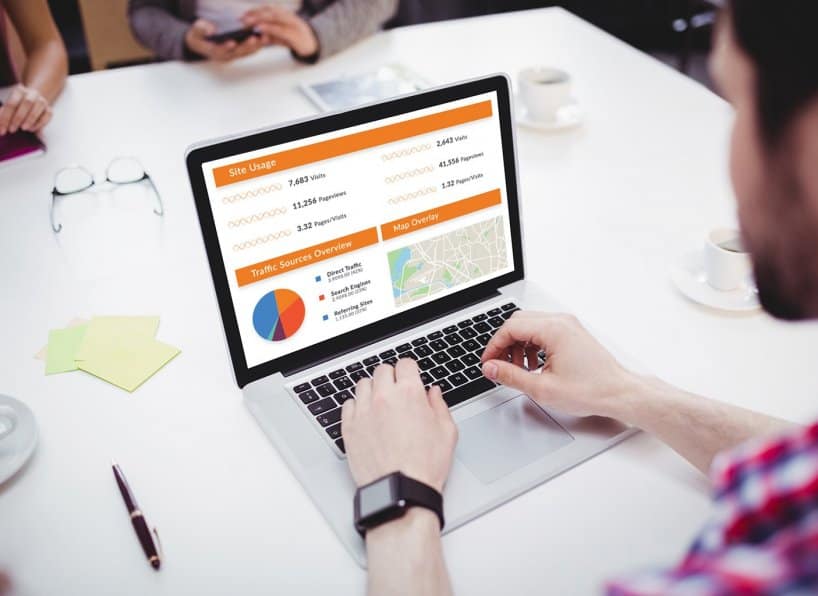Let’s say that your company is planning on launching a paid ad campaign, but you don’t have the resources needed to do the work in-house. In this case, you’ll need to partner with a digital marketing agency that has the know-how needed to handle the campaign for you. But how will you choose the right agency to team up with?
In order to find your perfect match, the first thing you need to do is introduce yourself (and your campaign) with a request for proposal (RFP). Don’t worry if you’ve never written one before, this post has all the information you’ll need to get started.
Everything You Need To Know About the RFP Process
In essence, paid ad RFPs serve much the same purpose as any other type of RFP, such as ones for website design projects. Their purpose is to convey the objectives, target audience, budget, timelines, and other important details about your campaign to potential agency partners. There are some key differences that set paid ad RFPs apart from others (more on this later), but at the very least, yours should also include comprehensive details about your organization, what you’re looking for, and in-depth information about your campaign.
Once your RFP is ready, you’ll send it out to the agencies you’re interested in working with. Not sure who to address it to? Try checking the agency’s website; many have dedicated submission portals or at least provide contact details to make this step as easy as possible. After sending your RFP on its merry way, agencies will then spend some time reviewing it, ultimately deciding whether to throw their hat in the ring and move forward with a proposal or bow out of the bidding process altogether.
While it can be time consuming, the RFP process is worth the effort — we promise! Choosing the right agency to partner up with can make all the difference to the success of your paid advertising campaigns, which is why it’s important to find one that gets your business. A thoughtfully written RFP gives you the best chance of finding “the one” because it helps the agencies you’ve targeted assess whether they can meet your needs, saving them and your organization time on discussions about work that falls outside of their expertise.
The Importance of Creating a Well-Structured RFP
As highly templatized documents, paid ad RFPs tend to include a lot of the same basic information from one to the next. So when you sit down to write yours, it’s always a good idea to put yourself in the agency’s shoes. The teams responsible for overseeing new business relationships read hundreds of RFPs, and if yours doesn’t stand out it risks getting passed over for one that does. For perspective, agencies only respond to an average of 63% of the RFPs they receive.
Your RFP is your opportunity to introduce yourself, so it’s always best to catch an agency’s eye by being clear, upfront, and realistic about your needs and goals.
A standout RFP…
Is an accurate representation of your company.
The RFP is often the first time an agency interacts with you, so it should paint a clear picture of who you are and what you do. This is your opportunity to let them know what you’re all about so they can determine whether or not their expertise is in line with yours. As in personal relationships, the best professional partnerships are grounded in honesty and transparency, so accurately representing your needs, goals, and culture in your RFP helps agencies understand who you are and ensures alignment from the outset.
Sets clear expectations.
An RFP not only lets agencies get to know your company, it also helps them become familiar with the task you’re asking them to take on. From project scope and timelines to goals, objectives, and budget, your RFP should lay out all the need-to-know information so potential agency partners understand exactly what you’re looking for and how (or if) they can meet your needs. This helps you make sure that you don’t waste time and budget hiring an agency that is ultimately unable to meet your expectations.
Demonstrates interest and research.
Think back to the last time you sent out job applications. To increase your chances for an interview, you most likely tailored your cover letter and resume to be specific to each opening you applied for. When writing RFPs, the idea is the same — copying and pasting won’t cut it. Agencies like to see that you’ve “done your homework,” and are likely to be more enthusiastic about working with you if you’ve taken the time to understand how the work you need fits with the services they are capable of providing.
6 Key Elements All Paid Advertising RFPs Should Include
Like any other RFP, paid advertising proposals need to include certain elements. The basics such as an overview of your company, the scope of work, evaluation criteria, and submission guidelines should always be covered. However, as we touched on above, PPC RFPs must also feature unique information that sets them apart from other RFP types. These differentiating elements include details related to:
1. Budget
Not only is it crucial to provide details about the financial resources you’ve set aside for the campaign overall, but it’s equally important to break down your budget by the digital platforms you want to target. This way, agencies can respond with a contract that more accurately lays out the full scope of costs. If you don’t know the exact breakdown of the platforms you plan to use, that’s ok! But be sure to note that you’re open to recommendations based on your overall goals.
It’s also a good idea to …
- Specify whether the budget is monthly or for the entire campaign
- Break down the budget further if possible—allocating funds for ad spend, creative development, management fees, and any other potential costs
- Be transparent about any flexibility or constraints you might have in your budget
2. Advertising Platforms
Different advertising channels target different audiences and have unique strengths and weaknesses. Outlining your preferred platforms can help agencies tailor their strategies to your goals.
It’s also a good idea to…
- Provide a list of advertising platforms you want to target, such as Google Ads, Facebook, LinkedIn, or similar
- Mention any channels you’re currently using (or have used previously), what worked well and what didn’t, and which ones you haven’t explored yet
3. Creative Expectations
Do you want to keep the generation of ad creative in-house or pass responsibility over to your future agency partner? Clearly expressing how involved you want your agency partner to be in creative development helps define overall campaign scope.
If you plan on asking agencies to oversee ad creative, it’s also a good idea to…
- Provide details on the types of creative assets you need, such as banner ads, video content, sponsored posts, or native ads
- Specify any branding guidelines, voice and tone, and any existing templates that agencies should adhere to
- Outline your process for creative approvals and revisions
- Note whether you currently have any landing pages on your website and expectations surrounding them (i.e. whether responsibility for building them falls on your team or the agency’s)
4. Campaign Goals
When agencies understand what you hope to achieve with the campaigns you’re looking to run, they can more easily propose strategies that align with these goals, whether you hope to increase brand awareness, boost lead generation, or improve direct sales numbers.
It’s also a good idea to…
- Describe the specific campaigns you are interested in, such as search engine marketing (SEM), display advertising, social media ads, or retargeting ads
- Mention any campaign objectives, timelines, and/or key performance indicators (KPIs) you plan to use to measure success — like branding, reengagement, or new contacts, for example
5. Targeting Criteria
Effective targeting is crucial to the success of your paid advertising efforts. By specifying your targeting criteria, you’ll help agencies propose more tailored and impactful strategies.
It’s also a good idea to…
- Define your target audience in terms of demographics, their interests and values, geographic locations, and any behavioral criteria (such as online behaviors, past purchase history, and the like)
- Mention any specific audience segments you want to prioritize or exclude from your campaigns
- Provide information about any lists you have access to for remarketing or similar audience targeting efforts
6. Your Customer Relationship Management (CRM) System
Including information about the CRM you currently use gives agencies insight into how they can integrate advertising efforts with your existing customer data. This integration is essential for tracking leads, conversions, and overall campaign success.
It’s also a good idea to…
- Be as detailed as possible about your CRM system, including any specific features or integrations that are particularly important
- Mention any specific requirements you have for CRM integration
- Set clear expectations regarding your CRM platform (are you firmly committed to your current system? Or are you open to potentially working with the agency’s preferred platform?) and include information about its capabilities, such as whether it can communicate with your Google Ads accounts or includes sales funnel information
Writing Your RFP: A Step-by-Step Guide
Now that you have a better idea of the purpose your paid ad RFP needs to serve and what it should include, the only thing left to do is to sit down at the keyboard and start writing — right? While it may not be quite as simple as that — creating an RFP that gets the responses you’re looking for involves taking steps to ensure that it meets your company’s needs and attracts the right candidates — it certainly isn’t as daunting as a blank page can make it seem.
Try taking the following steps to get started:
Before Writing Your RFP
- Identify the need for the campaign. Think about the challenges your PPC campaign will help your business overcome, whether it’s generating more brand awareness, driving more traffic to your product pages, or finding more leads. This way, you’ll be better prepared to justify the project to senior stakeholders and get approval.
- Determine goals. Having clear and measurable goals in your back pocket will help you secure stakeholder support and provide agencies with well-rounded information about your campaign once you begin to write your RFP. Your goals can also help to ensure that the relationship with your future agency partner stays in good standing, since they communicate expectations.
- Create a firm list of selection criteria. You can only attract the right agencies when you know what you’re looking for out of a partnership. Keeping this in mind, put together a list of key attributes you’re looking for in a partner, whether it’s a certain amount of industry experience, level of technical proficiency, an emphasis on creativity, or something else entirely. To prepare for the evaluation process, assign weights to each criterion based on their importance.
- Get input from stakeholders. Collaborate with key decision makers in your company’s marketing, sales, finance, and product teams to gather additional insights and requirements. To avoid headaches later, confirm that all stakeholders involved are on the same page when it comes to campaign scope, objectives, and priorities.
When Writing Your RFP
- Include an introduction. Set your future agency partner up for success by providing as much background information about your campaign as possible. There’s no such thing as too much context, and an introduction is a great way to provide it.
- Be transparent. As you put your RFP together, make sure that it clearly communicates your needs, expectations, and any campaign constraints. Keeping your language straightforward throughout can help avoid any confusion. That said, even after submitting what seems like a crystal clear RFP, agencies may still have questions — encourage them to get in touch if any aspects of the document are still hazy.
- Make sure your RFP is organized. Grouping similar sections together makes it much easier for agencies to review your RFP. This is especially helpful if your proposal includes a long list of questions for agencies to answer — keeping subjects grouped together will make the review process much more efficient.
- Be detailed, but not too prescriptive. Your campaign is your baby, and you have some specific hopes and dreams for its future, which is why it’s good to provide potential agency partners with as many details as they’ll need to bring your vision to fruition. What’s not so good is being overly prescriptive about how they should make it all happen. Good agencies are full of talented, experienced folks who have your best interests at heart. We know letting go is hard, but when agencies are given the opportunity to showcase their expertise you’ll be surprised (in a good way) by all the innovative, tailored proposals that come back across your desk. Ultimately, you want to include enough information to ensure that your goals are met without being prescriptive to the point that you restrict an agency’s ability to provide innovative results.
- Be upfront about your process. If you have a specific process you want agencies to follow, be sure to include it. Providing a timeline that details any follow up meetings, presentations, and deadlines helps agencies visualize the overall RFP schedule.
- Take your time. A rushed RFP is one that runs the risk of being unclear, incomplete, or worse — forgettable. Spend as much time as you need dotting your i’s and crossing your t’s before sending it out into the world. Before hitting that “submit” button, review your document multiple times, and then once more for good measure, to double check that it’s clear, accurate, and complete.
Bonus: Once you’ve narrowed down the field of potential agency partners to a shortlist of finalists, put some time on the calendar to answer any questions the remaining agencies may have about your RFP.
Steer Clear! Common Mistakes To Avoid
Everyone makes mistakes, and whether you’re a seasoned RFP pro or you’re gearing up to write your first one, it’s all too easy to wander into common pitfalls. Avoiding these mistakes will help you create an RFP that attracts quality proposals and leads to successful partnerships. The chart below takes a closer look at some of the most frequently made mistakes and how to steer clear of them.
| Mistake | Consequence | Solution |
| Failure to spend enough time defining campaign scope | Agencies may submit proposals that aren’t closely aligned with your needs | Taking the time you need to fully develop campaign scope Collaborating with stakeholders to set expectations about requirements Ensuring that these requirements are clearly communicated within the RFP |
| Providing insufficient or convoluted evaluation criteria | Difficulties comparing proposals and selecting the best agency for your project | Creating a list of qualities your ideal agency partner should possess Clearly communicating this list and the evaluation process within the RFP |
| Setting an unrealistic timeline for the project | The project may be completed behind schedule and over budget | Adjusting your timeline to reflect the scope of the campaign and complexity of its deliverables Building buffer time into the schedule to make up for unplanned delays Checking in with your agency partner to make sure they can work comfortably within your proposed timeline |
| Establishing a proposal response time that’s too short | Reduced proposal quality and a lack of responses | Increasing the response window to four weeks If your project is complex, consider extending the deadline |
| Omitting a primary point of contact | Agencies won’t know who to reach out to if they have questions or need clarification, leading to incomplete proposals or non-response | Choosing a point person who will be responsible for handling all communications related to your RFP Clearly including their contact information in the RFP |
| Submitting a generic or bare-bones RFP | Generic RFPs get generic responses | Tailor your RFP to your specific campaign, don’t just copy and paste from the last one you wrote Flesh out each section of your RFP, making sure it provides the information agencies need to craft in-depth responses |
| Including irrelevant information | Wastes your time as well as agencies’ | Keep your RFP focused on paid ads only Avoid including information or questions that fall outside of this scope |
Get Your RFP Right the First Time With Our Template
If you still aren’t sure where to start with your paid advertising RFP, we totally get it — there’s a lot to cover. And when the stakes are high, so is the pressure to make sure your RFP gets the high-quality proposals you’re hoping for. If you’re beginning to panic, there’s no need — we’ve got you covered.
At Vital, we’ve been in the digital marketing game for a long time, so we know a good RFP when we see one, and our free RFP template combines all the important parts into one comprehensive document. Download your copy today to get started on your next PPC RFP.
Get the Paid Ads RFP Template
Fill out the form below to download this editable Word Document template to make writing your RFP a breeze.
Includes descriptions and examples for every section of your paid advertising RFP!



